How to tackle giant hogweed through sheep grazing
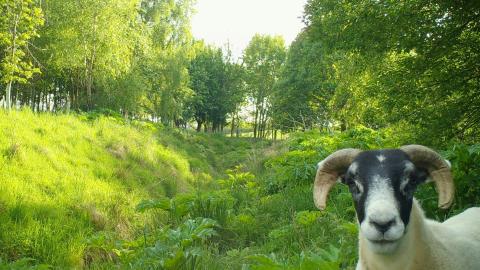
Exciting News from our Sheep Grazing Trials
The Scottish Invasive Species Initiative has been running a giant hogweed sheep grazing trial since 2019 at a site near Macduff in the Deveron catchment, in Aberdeenshire.
As we reach the end of this four-year trial, we have put together a summary of our management guidance recommendations for land managers who are interested in using sheep grazing as a control method for giant hogweed.

Caught on camera – one of our ‘Woolly Warriors’ flocking to the rescue
Giant hogweed – how is it normally controlled?
Giant hogweed is one of the most notorious invasive non-native species in the UK. Not only is it highly invasive and easily spread – each seed head can produce 20-50,000 seeds, all potentially viable for up to 10 years – it also contains a phytotoxic sap within its leaves and stems which can cause severe skin burns. It is a challenging plant to control, partly due to the dangers posed by the toxic sap but also because an infested site must be treated consistently for many years (sometimes 10 or more) to fully exhaust the seedbank.
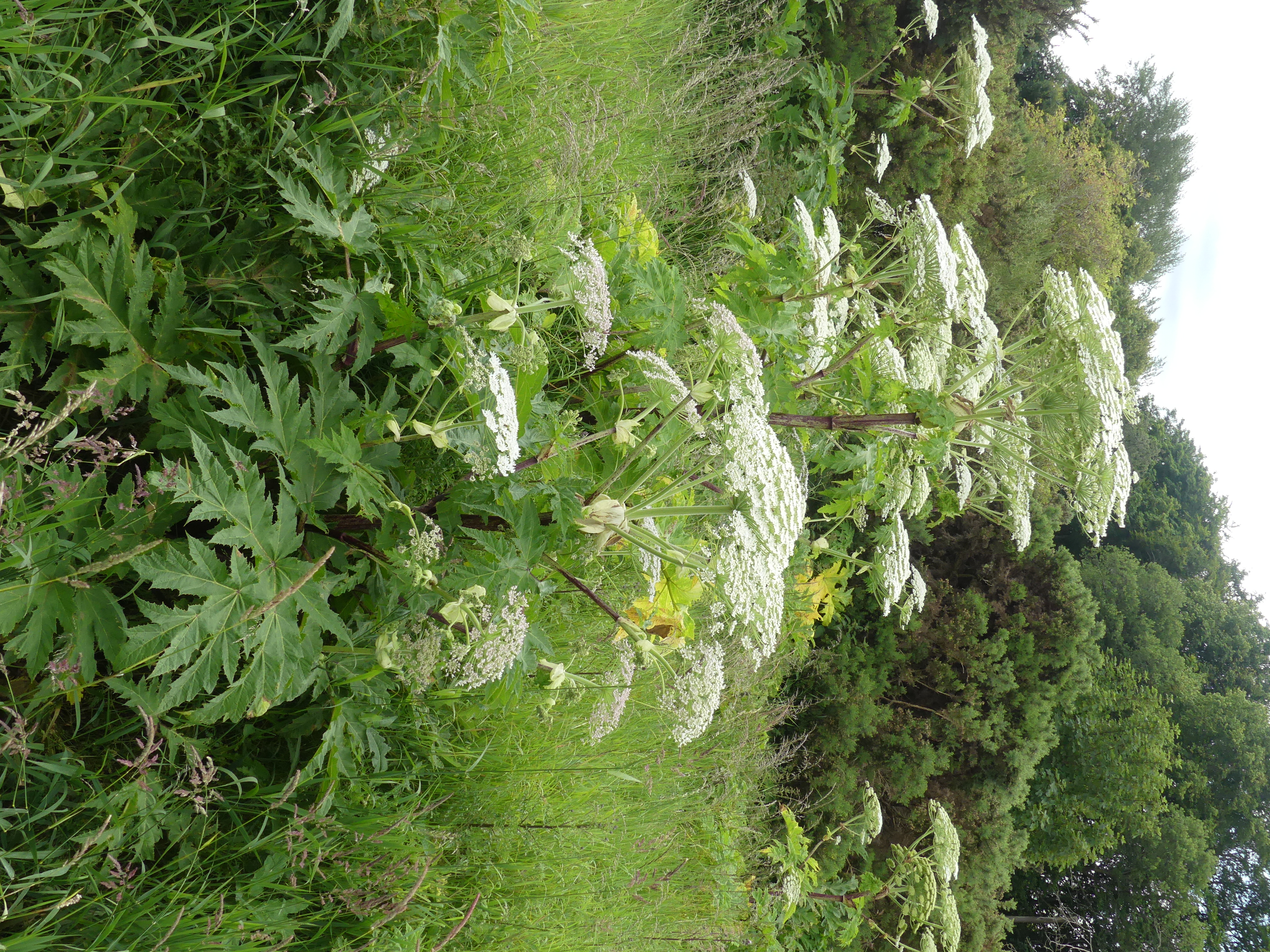 |
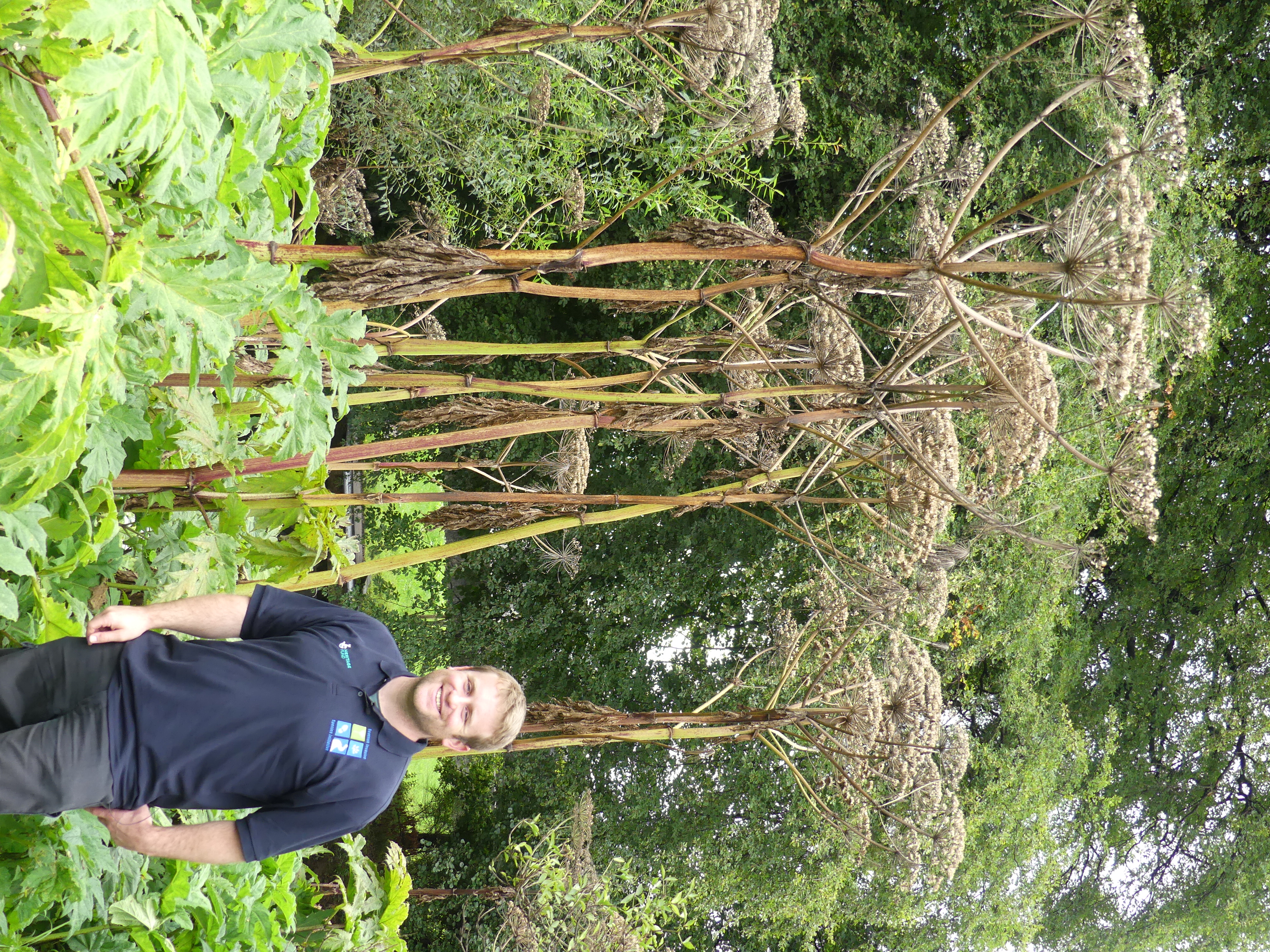 |
|
| Giant hogweed flowers (left) and seed heads (right) | ||
Infested sites are normally treated by spraying pesticides onto the leaves of the plants and by cutting flowering heads to prevent further seed production. Over time this will kill off the infestation and deplete the seedbank in the soil. However, this can be time consuming, costly and physically challenging – especially in difficult terrain. It is a serious undertaking to tackle large sites with bad infestations and one that requires qualified workers and a significant time contribution over multiple years from staff and volunteers to complete.
For the past four years the Scottish Invasive Species Initiative has been investigating an alternative method of control – sheep grazing.
Sheep grazing to control giant hogweed
Once familiar with the plant, sheep will readily and even preferentially graze on giant hogweed with, in our experience, no adverse effects from the sap. Over time, grazing can deplete the resources stored in the plant’s taproot and eventually kill it off. A flock of ‘woolly warriors’, deployed to an infested site to graze the plant over a growing season, can minimise the time, expense and effort otherwise required by land managers to tackle the problem.
This method will of course only be useful in certain situations (i.e. where livestock grazing is possible and can be managed), rather than across entire river catchments but it is a fantastic alternative in the right location – such as our trial site in Macduff.
| Once familiar with the plant, sheep will readily graze giant hogweed | Camera traps are used at the trial site to help monitor progress | |
Macduff Sheep Grazing Trial
The Macduff sheep grazing trial is a practical investigation as to how best and whether we can use sheep grazing to control substantial giant hogweed infestations. The trial site is in a woodland near the mouth of the River Deveron. This woodland, once thick with giant hogweed, is now gradually being restored to a more natural state with the help of our friendly flock.
“It’s amazing to see the progress made over the last four years,” commented Dan Gordon, landowner of the Macduff trial site. “The giant hogweed was completely dominating the woodland and would have been really tricky and costly to deal with using pesticides. The Scottish Invasive Species Initiative provided a very welcome opportunity to try an alternative approach - I’m really pleased with the results.”
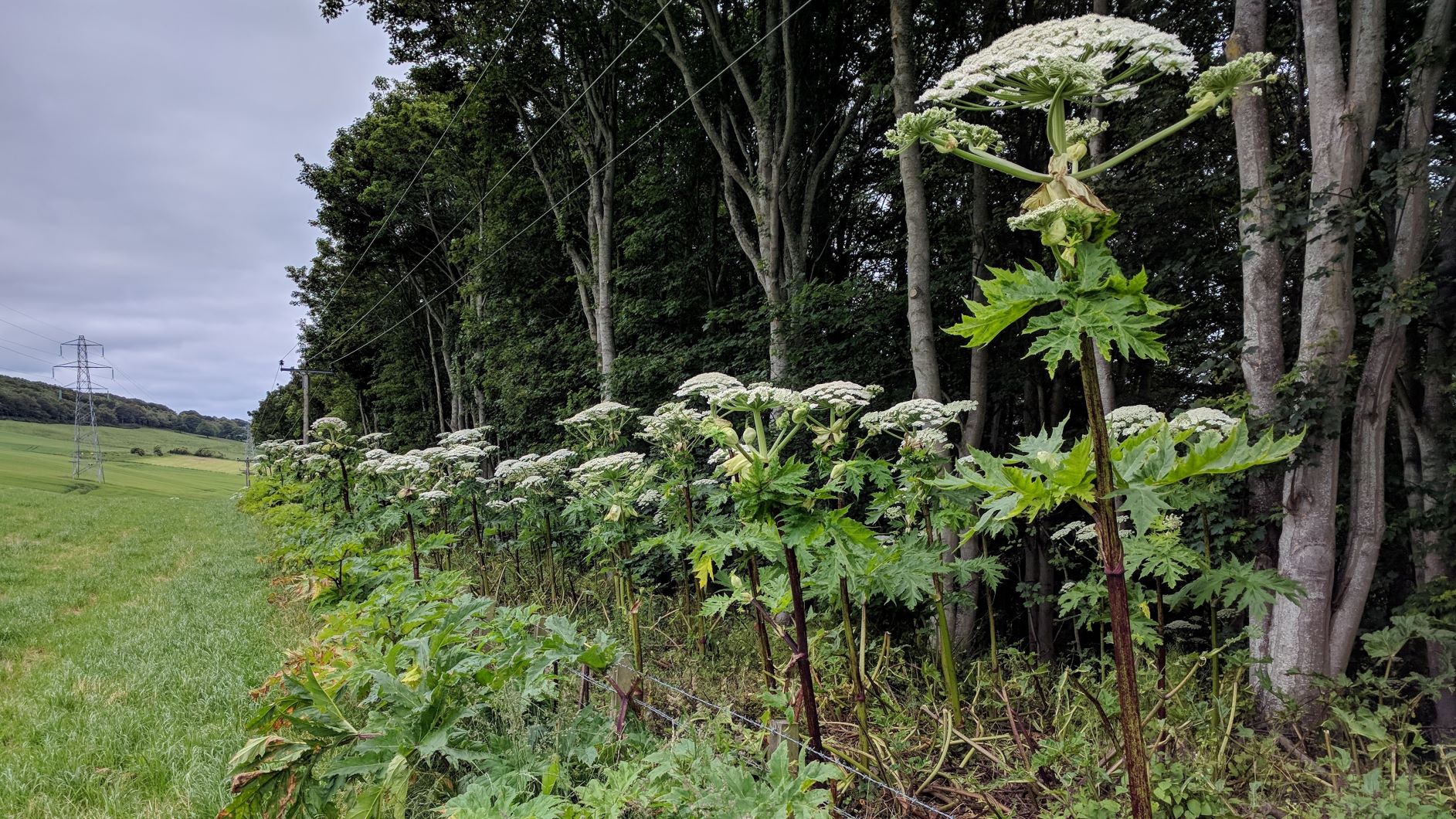 |
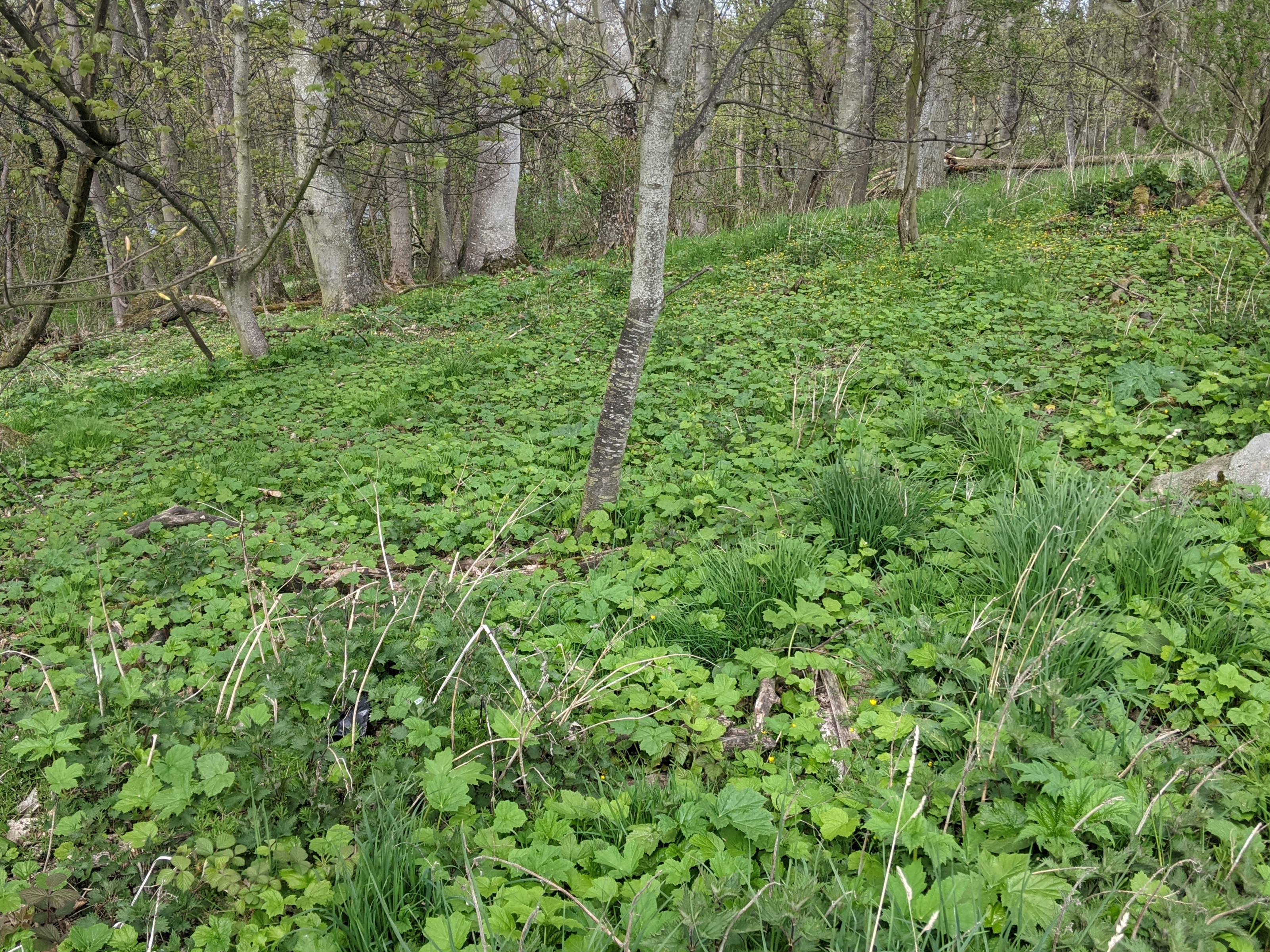 |
|
| When the trial began the woodland site was full of mature giant hogweed plants | Seedlings are now much more common than mature plants | |
Monitoring the effect of the sheep on both giant hogweed and native vegetation has been an integral part of the trial. Our monitoring has shown a reduction in giant hogweed occurrence and allowed us to adjust grazing pressure to limit overgrazing of native vegetation and so preserve the ecological value of the site. Our findings suggest that sheep grazing has been an effective method of controlling giant hogweed. The full case study, detailing our management strategy and monitoring results, can be found here.
Karen Muller, the Project Officer managing this work, commented, “The monitoring undertaken was really important as it allowed us to adjust our grazing regime each year and find the right balance between grazing the giant hogweed and avoiding overgrazing - thereby protecting native plant species. We reduced grazing pressure over the first few years and settled on a regime that controlled giant hogweed with limited impacts on native flora.”
Management Guidance
The lessons learnt and knowledge gained in this trial have been collated into management guidance available here.
This includes an overview of the Macduff trial, management considerations and key tips for success – everything from what type of sheep were used, what time of year to deploy sheep on a site, how to reduce the risk of overgrazing and key things to look for when monitoring progress.
Project Manager Callum Sinclair said: “We are delighted to share this management guidance and hope it will help to inform and encourage others interested in using sheep grazing as a sustainable, long-term method of giant hogweed control. We’d especially like to thank Dan Gordon from Kirkside Farm and our colleagues at the University of Aberdeen for their commitment, hard work and support on this project at Macduff.”
We hope this guide will be useful for others considering sheep grazing as a method to control giant hogweed – we have already provided advice and support to three other groups and organisations interested in deploying sheep in their own giant hogweed control programmes. If you would be interested in arranging an open day to our Macduff trial site, please get in touch.
Contact for enquiries: [email protected]
